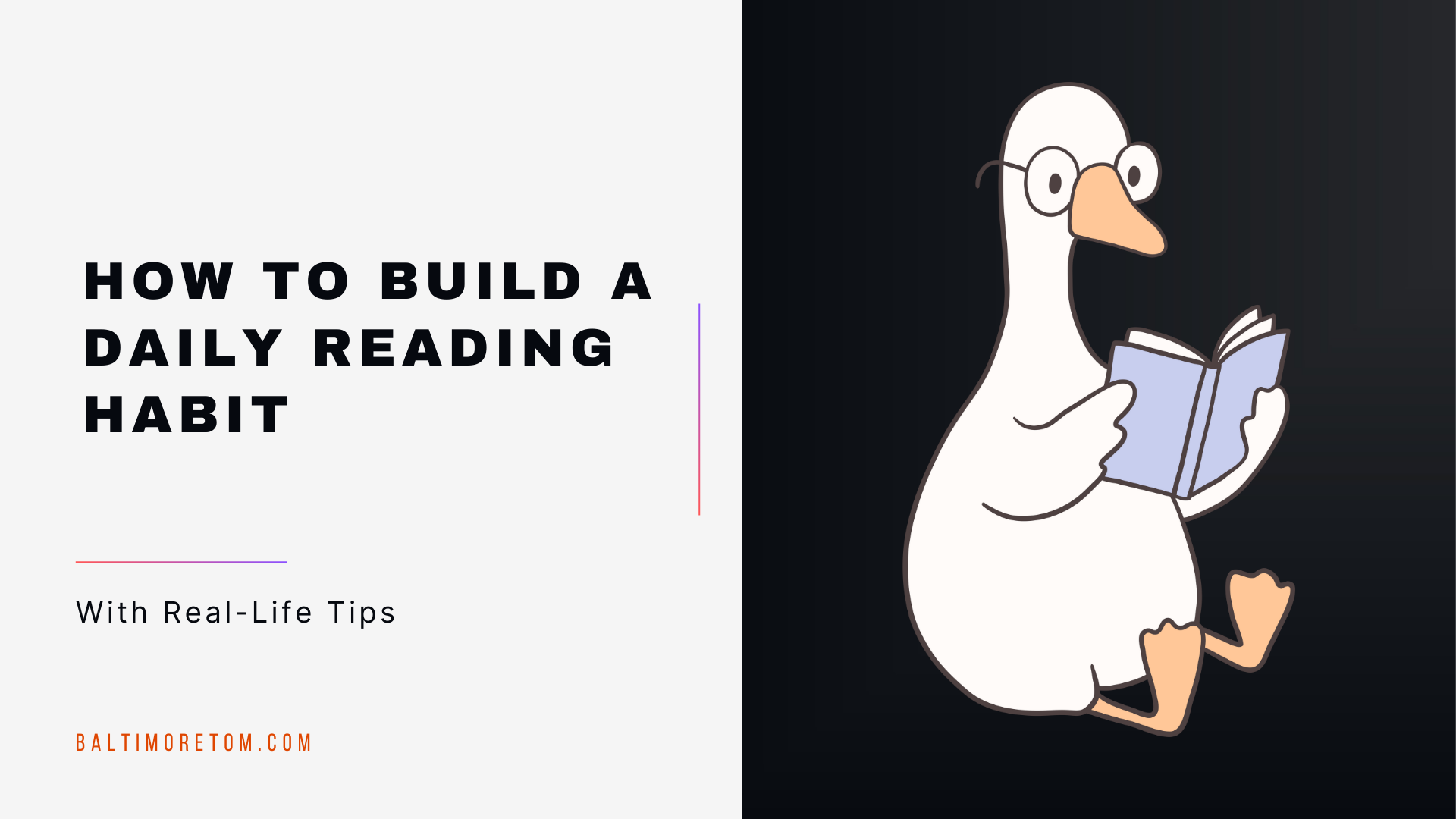How to Build a Daily Reading Habit

Table of Contents
TL;DR
Building a daily reading habit requires starting small, choosing the right time and place, and focusing on consistency over quantity. Key strategies include reading for just 5-10 minutes initially, keeping books visible and accessible, tracking progress, and being flexible with what you read. The goal is to make reading feel natural and enjoyable rather than forced.
Provided by Claude Sonnet 4
How to Build a Daily Reading Habit
Reading has always been one of the simplest ways to reset the mind, but it often slips down the list of daily priorities. We tell ourselves we will pick up a book before bed or during the weekend, only to find that days pass without opening one. A reading habit does not emerge from willpower alone. It comes from building the right system around it.
Count the Chapters, Not Just the Pages
One of the most overlooked strategies is to think in chapters instead of minutes. Most books follow a rhythm where chapters are roughly the same length. Once you know that, you can make the book measurable.
Take a look at the table of contents, or flip through the chapters and estimate the average number of pages. If a novel has 40 chapters and you want to finish in a month, you know you will need to read about a chapter and a half per day. If the chapters average ten pages, you also know what that means in terms of time.
The point is not speed. It is clarity. By breaking the book into daily chapter goals, you remove the vagueness that often kills habits.
Embrace the Long Read
Not every book needs to be finished in a week or a month. Some are meant to stretch across seasons, and that can be a powerful way to keep reading consistent.
Take Anna Karenina, which has 239 chapters. I have made it a long read by committing to one chapter each weekday. That is about a year of reading, with weekends left open for other books. The pace is slow and steady, but it means I am always in the middle of a masterpiece, moving through it piece by piece.
For me, this happens in the morning. I sit down with coffee and read my chapter before I look at my phone, turn on the news, or check in with the day. It takes about 15 minutes for a book like this, and it sets a calm rhythm that carries forward.
I like to think of the long read as a backbone habit. It is one book that provides daily structure, alongside other shorter reads I pick up freely.
Start Small and Specific
The biggest mistake is aiming for an hour of reading every day when you are not reading at all. Start with a chapter, or even half a chapter, depending on the length. A clear minimum makes it easier to stay consistent and gives you a sense of completion each day.
Anchor Reading to an Existing Routine
Habits last when they are attached to something you already do. Morning coffee, a lunch break, or winding down in bed are natural anchors. Once you tie reading to a daily ritual, it requires less decision-making.
That is why the coffee-plus-chapter ritual works so well. The book comes before screens or headlines. By the time the mug is empty, I have already read something meaningful.
Create the Right Environment
Where and how you read matters. A comfortable chair, a quiet corner, or simply a dedicated bookmark can serve as cues. Keep your current book visible. If it is buried in a bag or lost under papers, it will not get read.
Digital readers can work the same way. My Kindle sits on the nightstand or the table next to “my chair” so that reaching for it is as easy as picking up my phone.
Track Progress Without Pressure
When you read in chapters, tracking is simple. You can mark off each chapter as you go and see progress stack up. Some people like streaks and spreadsheets, others just keep a slip of paper as a bookmark with notes on what they have finished.
What matters is not the number of books finished but the rhythm of daily engagement. Chapters make that rhythm visible and satisfying.
Protect the Time
A reading habit is easy to dismiss as optional. Treat it as non-negotiable, even if it is only a chapter a day. Once it is part of the day, it holds its place alongside exercise, work, or meals.
I have found that blocking it out in my calendar makes a difference. It reminds me that reading is not a luxury. It is part of daily care.
Final Thought
A daily reading habit does not need to be dramatic or aspirational. It is about stacking small, real choices that make reading the natural next step in your day. Count the chapters, know the average length, and decide how many you will read each day. Mix shorter books with one long read that unfolds at its own pace. A single chapter with morning coffee is often enough to anchor the entire day.